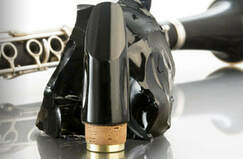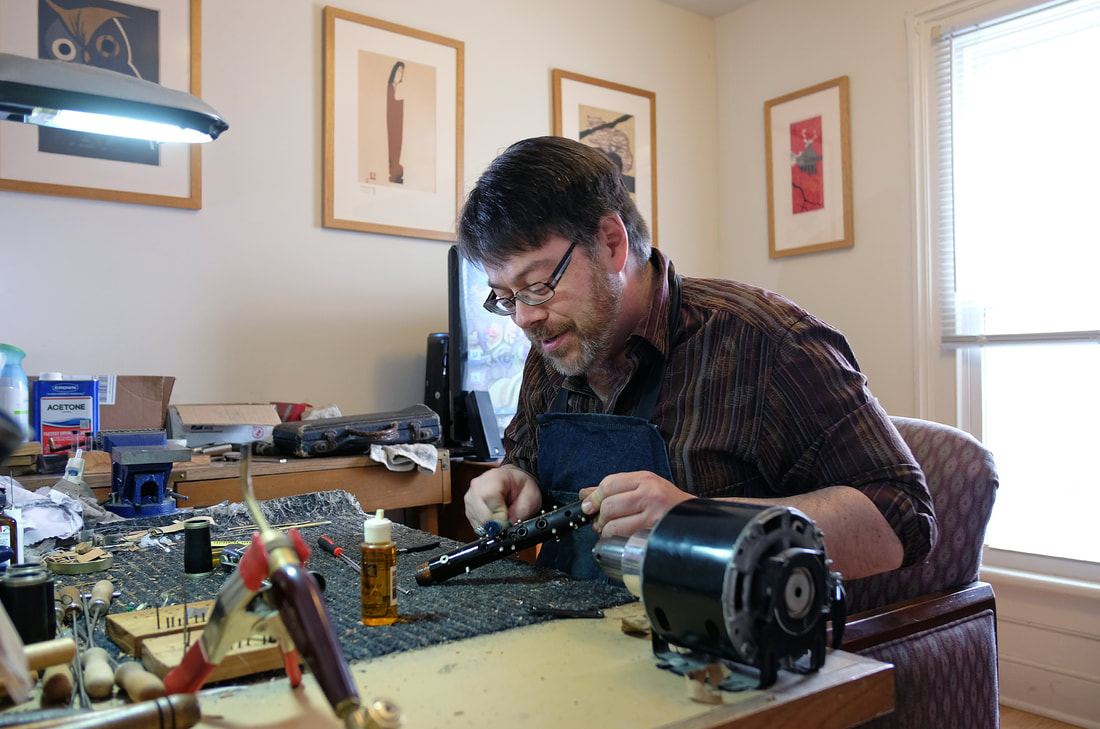 After clarinet porn comes mouthpiece porn: The gleaming, moodily lit photo, the famous artist endorsements, the promises of great tone, singing altissimo and perfect intonation...and, of course, the high price tag. Why do we fall for it? My sax teacher years ago gave me the best piece of wisdom on the subject: "When you try a new mouthpiece, you're playing the piece. After a week, you're back to playing you." I think what he was trying to say is that a sudden change emphasizes the differing qualities of the mouthpiece. It takes time for your embouchure to settle down and adapt to it and, in that time, your playing habits, (good and bad) reassert themselves...often with a vengeance. Do you close your throat and pinch going for high notes? That squeak and thin tone will be back. Do you have a poor ear for intonation? A $250 hand faced Zinner blank can play just as out of tune as a $30 plastic Yamaha 4C. Now, these are the things I've found that make a genuine difference, regardless of the mouthpiece you choose: First and most important, tonal concept. What are you trying to achieve? Who's your idol and can you hear the tone in your head? When a high school-aged kid comes for a jazz lesson, I ask "Who's your hero, who do you want to sound like?" If they say "I dunno", I know I'm in for a lousy school band tone, regardless of their horn and setup. If you can't hear it, no $3k horn will get it for you! Regardless of what style you play, listen to the greats. If you're channeling Buddy DeFranco or Sonny Rollins now, fine. You'll find your way to you, if you keep playing...but you have to have a tonal concept. Second, a decent setup that's headed in the right direction. If you're playing a vintage Buescher TrueTone alto sax with a Rascher mouthpiece and you love Reggae...you're in trouble. Likewise, channeling Debussy on a Yanigasawa with a screaming Dukoff mouthpiece will probably fail to enchant! I'm offering extreme examples, but I've seen choices just as bad. What do you want to play? What setup do prominent players of that style use? But, don't fall into the trap of paying $500 for a vintage Big B Brilhart ligature because Charlie Parker used one - he also used a bent spoon and a rubber band as a substitute key - but find something, vintage or modern, that's headed in the right direction. I love off-brands, like Dolnet saxes and Penzel Mueller clarinets. Lots of bang for much less buck...and that goes double for used mouthpieces on ebay! Third, pick a good mouthpiece...and stick with it! It takes time to explore and master a mouthpiece and consistent results come most easily from a consistent setup. If you're constantly changing parameters, your embouchure, lungs and ears won't settle in to get the best from your 'piece. And you needn't spend hundreds: old Selmer and Portnoy clarinet mouthpieces, for instance, sell used on eBay for $30-50 routinely...and they can be great mouthpieces. Try a few before breaking the piggy bank for the latest shiny Uber-mouthpiece! Last, practice practice practice...but intelligently. No mouthpiece, however fancy and expensive, is a substitute for daily, thoughtful practice! Now, scales and etudes are a good start, but playing a scale from the root to the octave and back, out of time and without a tuner, won't teach you the horn or the key...2 bar scale patterns, in time, all over the horn, with a tuner, will. Long-tones are great for your chops...but so are overtone exercises and I'm surprised at the players I meet who aren't familiar with them. There is so much good info online to help you with your growth, whether you have a teacher or not - use it! YouTube videos covering everything from breathing to improv are yours for free...wish we'd had them back in the 80's... I hope some of these ideas are helpful, whether you are a beginning or advancing player. Save your money, try the above, and let me know what you think!
0 Comments
 A customer just wrote to ask : "What's a good set up for jazz on the clarinet? I've changed my embouchure a lot but I'd like to have the best set up possible also, any advice would be great! Thanks!" I'd like to have the best setup possible, too! So, here's my answer: " Well, that's a tough question...Its very individual. If you look at a list of famous players on any instrument (especially woodwind) the setups tend to be all over the place. Generally speaking, Jazz players use a more open tip and a lighter reed than classical, but a bigger part is having a 'jazz tone' in your head, and adjusting your timing, attack, phrasing, etc. to reflect a Jazz concept. Who do you listen to? Buddy DeFranco? Artie Shaw? Lots of listening and practicing with play-along tracks will help the most... Now that, being said, its harder to get a Jazz sound on Vandoren M13 mpc with #4 reeds - that's a pretty closed, stuffy setup. I've used Bernard Portnoy mouthpieces on my horn and with students and had good results, either the BP02 or more open BP03 facing. These can generally be found on ebay for about $40 used. Also, an older Selmer HS** (2 stars, not one) gives a nice tone and is open enough to give some flexibility. For a REALLY open facing, the Vandoren 5jb is a favorite, but some players find it tiring and you would have to work on intonation with a tuner - its got a great tone, though! Also, don't forget reeds! I'd try a Fibracell 3.5 or 4 synthetic, (as they run about a grade softer than Vandoren cane) or, if you really prefer natural reeds, look at a non-classical cut from Alexander: they make some really nice reeds cut specifically for a Jazzy sound. How's that for an answer? |
Archives
February 2024
AuthorThe Licorice Shtick Blog is the creation of the Vintage Clarinet Doctor, a Winston Salem, NC based woodwind instrument repair shop specializing in vintage and antique clarinets, saxophones, and the occasional flute. Categories |

 RSS Feed
RSS Feed